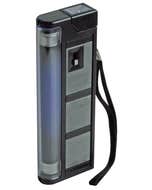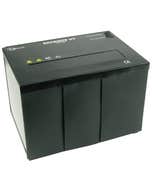Absorbents: Silica (0.20 mm) or cellulose (0.1 mm)
Support: Polyester or aluminum
Thin Layer Chromatography (TLC)
| SKU | Support / Absorbant | Dimensions (L x l) | Vendu par | Price | Available | Amount Basket | ||
|---|---|---|---|---|---|---|---|---|
| 591019 | Aluminum / Silica (0.20 mm) | 200 x 200 mm | Box of 25 |
€145.00
€174.00
|
In stock |
|
||
| 591053 | Aluminum / Silica (0.20 mm) | 75 x 50 mm | Box of 20 |
€33.75
€40.50
|
In stock |
|
||
| 591017 | Aluminum / Silica (0.20 mm) | 80 x 40 mm | Box of 50 |
€53.33
€64.00
|
In stock |
|
||
| 591015 | Polyester / Cellulose (0.1 mm) | 80 x 40 mm | Box of 50 |
€56.67
€68.00
|
In stock |
|
||
| 591018 | Polyester / Silica (0.20 mm) | 200 x 200 mm | Box of 25 |
€157.50
€189.00
|
In stock |
|
||
| 591014 | Polyester / Silica (0.20 mm) | 80 x 40 mm | Box of 50 |
€49.17
€59.00
|
In stock |
|
Which type of plates to choose?
The support
- Polyester: recommended for eluents with high water content. Resists temperatures of 160 °C and all solvents.
- Aluminum: can be used at higher temperatures than polyester sheets. Used with eluents containing a high proportion of mineral acids or ammonia, which can solubilize aluminum.
Absorbent
- Cellulose: polar interaction partition chromatography. Used for separation of polar substances (amino acids, carboxylic acids, carbohydrates...)
- Silica: normal phase chromatography. Wide range of applications.
Fluorescent indicator
Detection of substances under UV lamp at 254 nm (except polyester/cellulose plates without indicators). Green fluorescence is suppressed at the substance level if it absorbs from 230 nm onwards.
For revealing amino acids with ninhydrin, it is preferable to use plates without fluorescent indicators.
Caution: sensitive to acids.
|
Caractéristiques techniques
|









